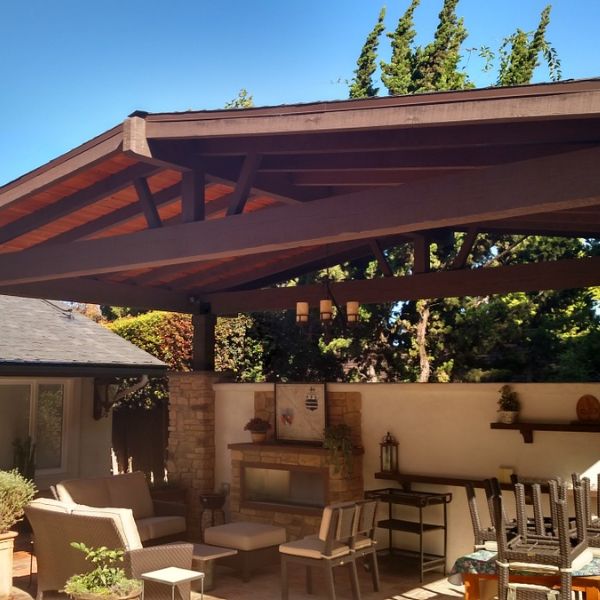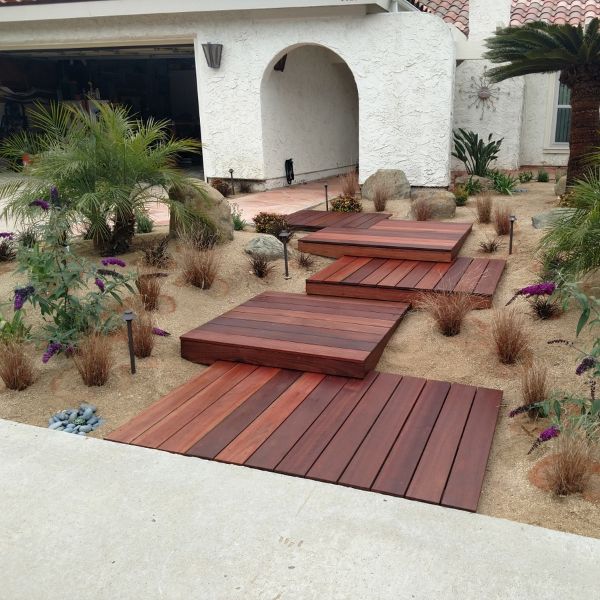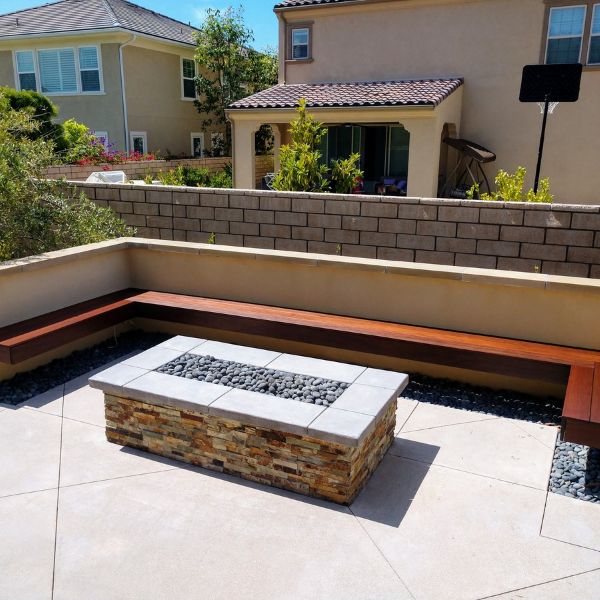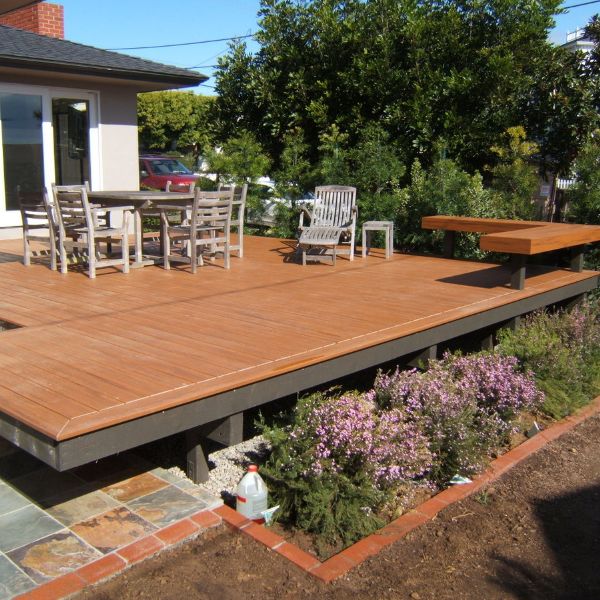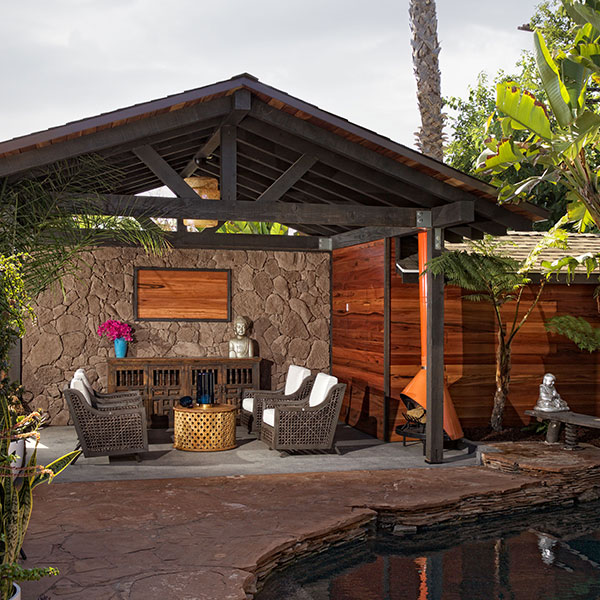Let Wilson Woodscape Take on Your Next Landscape Project
If you’re planning to build a retaining wall on your property, you may be wondering what your options are. Stability, space, and versatility are at the top of any builder’s wish list. So, why settle for a traditional solution when there’s an innovative approach that can meet all these demands? Wilson Woodscapehas a solution for you: anchored retaining walls.
Anchored retaining walls, an ingenious combination of form and function, are here to change the game. See how an anchored retaining wall may be just what your landscape needs by contacting our San Diego contractor, Jeff Wilson, today at 619-838-1398!
What Are Anchored Retaining Walls?
Anchored retaining walls, also called tie-back systems, are an innovative solution for adding strength and stability to walls. They’re especially handy when regular walls won’t work because of limited space or heavy loads.
These walls use cables or anchors to prevent tipping or sliding, typically made from concrete with a reinforced steel frame. The anchors, often high-strength cables or bars, are attached securely to the wall and anchored deep into the ground.
Purpose of Anchored Retaining Walls
The main purpose of anchored retaining walls is to create a strong mass of soil that can resist outside pressures. This makes them great for places that need to hold back earth and bear heavy loads. They’re used in lots of projects for increased stability like:
- Roads
- Bridges
- Elevated decks
- Parking areas
- Terracing slopes or hillsides
Anchored retaining walls are known for being stable, well-designed, and flexible in how they’re built, making them a popular choice for a wide range of projects.
Components of an Anchored Wall System
More than a basic retaining wall, an anchored wall system is a complex structure that incorporates many components functioning in sync. These components include:
- Vertical structural elements, such as soldier piles or sheet-pile wall elements
- Ground anchors
- Design earth pressures
- Corrosion protection systems for ground anchors
- Additional components like flashings and drip edges.
Arrowhead and Bullet anchors, often made of steel rods, are specially designed to secure wood or timber retaining walls, ensuring a strong, stable structure.
Choose Wilson Woodscape for Your Anchored Retaining Walls
When it comes to anchored retaining walls, Wilson Woodscape, a San Diego-based landscape contractor, stands out in the crowd. With 40 years of construction experienceand 25 years of landscape expertise, Jeff Wilson has built a local landscape company that focuses on innovation and unique designs.
Why Choose Our Team?
Choosing Wilson Woodscape for your anchored retaining wall project ensures access to their wide-ranging services, spanning from design to installation and upkeep. They employ only the finest quality materials and a team of highly skilled professionals to ensure superior results. Trust Wilson Woodscape to bring your vision to life with custom ironwork, woodwork, and concrete work, ensuring your project is nothing short of spectacular.
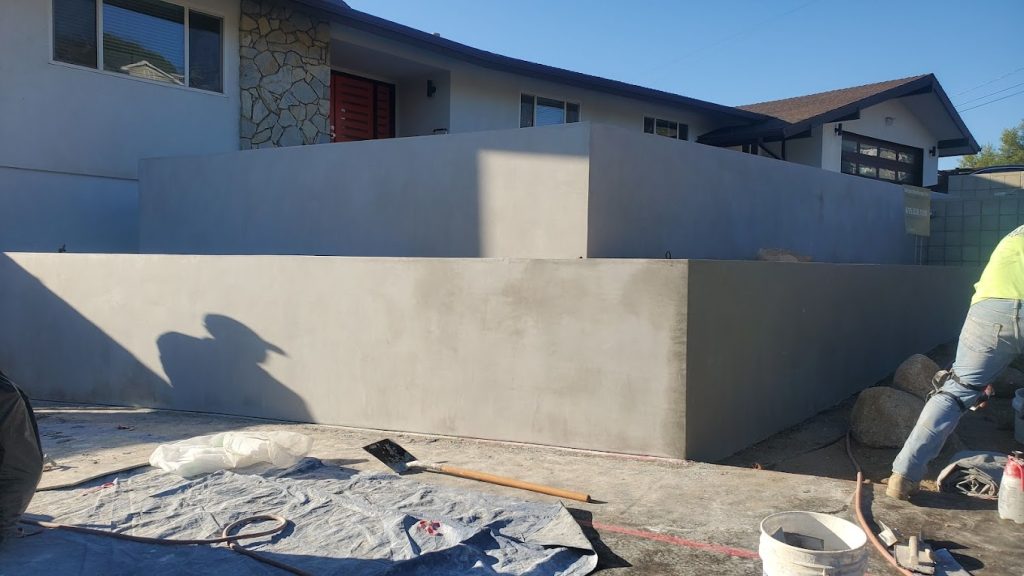
Benefits of Anchored Walls
Several benefits come from having an anchored wall, including:
- Increased Stability: The anchors provide additional support to the wall, making it more stable and able to withstand higher loads.
- Greater Design Flexibility: Anchored retaining walls can be designed to support taller walls, steeper slopes, and wider loads than other types of retaining walls.
- Space-Saving Design: Their compact design allows construction in limited space, reducing excavation and labor requirements.
- Improved Durability: High-quality materials and anchoring systems make anchored retaining walls more durable and resistant to erosion and weathering.
- Adaptable Construction: They’re suitable for areas with poor soil quality and high loads.
Why Would You Need an Anchored Retaining Wall?
An anchored retaining wall may be needed for your landscape if:
- You Have a Sloped Yard: If your property has a slope, an anchored retaining wall can help level the ground and create usable space.
- You Live in an Area with High Winds or Seismic Activity: Anchored retaining walls are designed to withstand high winds and seismic activity, making them a great choice for areas prone to these conditions.
- You Want to Create More Usable Space: An anchored retaining wall can help you create more usable space on your property, whether you’re looking to build a patio, garden, or pool area.
Installation Process for Anchored Retaining Walls
Site Preparation
For a successful installation of the anchored retaining wall, our San Diego landscape contractor and the team will start the site preparation. This typically includes removing vegetation, grading the area, and compressing the soil to create a solid foundation for the wall.
Once the site is prepared, we’ll excavate the base trench, ensuring that it’s of sufficient width and depth to accommodate the wall. From there, we’ll transfer the soil into position, making sure the appropriate spacing of anchors based on wall type and height is considered.
Drilling Holes and Installing Anchors
The construction of an anchored retaining wall significantly involves drilling holes and installing anchors. To create holes in the ground or wall, a drill of the appropriate size must be used, depending on the size of the anchor being installed. Upon completing the drilling process, we’ll insert the anchors into the holes and fasten them securely with a hammer, screwdriver, or other suitable tools.
Connecting Tie Backs and Completing the Wall
In the installation of an anchored retaining wall, connecting tie-backs and completing the wall are essential steps. This process involves drilling holes in the wall, inserting anchors, and securing them to the tie-backs.
This connection between the anchors and the wall contributes to the increased stability and support of the anchored retaining wall, equipping it to withstand lateral forces and diminish earth pressures on the wall. Following the connection of tie-backs and completion of the wall, the anchored retaining wall will provide a stable, space-saving, and versatile solution for any project.
Anchored Wall Maintenance
Maintaining your anchored retaining wall is crucial to ensure its longevity and effectiveness. Here are some tips to keep in mind:
- Inspect the wall regularly: Inspect the wall periodically for signs of damage or erosion, such as cracks or bulges.
- Keep the drainage system clear: Make sure the drainage system is clear of debris to prevent water from building up behind the wall.
- Clean the wall: Clean the wall periodically to remove dirt, mold, or other contaminants that can damage the wall over time.
- Repair any damage promptly: If you notice any damage, repair it promptly to prevent it from getting worse.
Frequently Asked Questions
Anchored retaining walls typically range from 6′-18′ (1.83-5.49 m) in height and 8”-24″ (20.1-61 cm) in depth, with lengths varying depending on the situation. These walls provide extra stability to hold back soil, employing anchoring cables or rods for added support.
With proper maintenance, anchored retaining walls can last several decades. The lifespan will depend on factors such as the quality of materials used, the installation process, and the level of maintenance and upkeep over time.
The cost of an anchored retaining wall will depend on various factors, such as the size of the wall, the materials used, and the complexity of the anchoring system. Consult with a professional contractor for a detailed cost estimate.
Anchored retaining walls can be built on various soil types, including clay, sand, and gravel. However, the specific soil conditions and other site factors will need to be evaluated to ensure proper design and installation. Consult with a professional engineer or contractor to assess the site and determine the best approach for building an anchored retaining wall.
Call Wilson Woodscape Today!
Ready to start your new landscaping project? Contact Wilson Woodscapetoday at 619-838-1398. Our San Diego landscape contractor will discuss your project goals and decide if anchored retaining walls will be beneficial.

